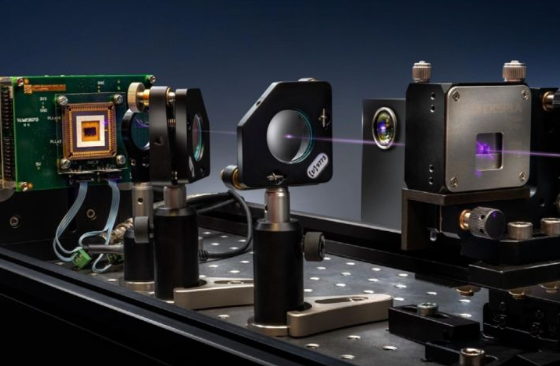The principle and present situation of avalanche photodetector (APD photodetector) Part Two
2.2 APD chip structure
Reasonable chip structure is the basic guarantee of high performance devices. The structural design of APD mainly considers RC time constant, hole capture at heterojunction, carrier transit time through depletion region and so on. The development of its structure is summarized below:
(1) Basic structure
The simplest APD structure is based on the PIN photodiode, the P region and N region are heavily doped, and the N-type or P-type doubly-repellant region is introduced in the adjacent P region or N region to generate secondary electrons and hole pairs, so as to realize the amplification of the primary photocurrent. For InP series materials, because the hole impact ionization coefficient is greater than the electron impact ionization coefficient, the gain region of N-type doping is usually placed in the P region. In an ideal situation, only holes are injected into the gain region, so this structure is called a hole-injected structure.
(2) Absorption and gain are distinguished
Due to the wide band gap characteristics of InP (InP is 1.35eV and InGaAs is 0.75eV), InP is usually used as the gain zone material and InGaAs as the absorption zone material.
(3) The absorption, gradient and gain (SAGM) structures are proposed respectively
At present, most commercial APD devices use InP/InGaAs material, InGaAs as the absorption layer, InP under high electric field (>5x105V/cm) without breakdown, can be used as a gain zone material. For this material, the design of this APD is that the avalanche process is formed in the N-type InP by the collision of holes. Considering the large difference in the band gap between InP and InGaAs, the energy level difference of about 0.4eV in the valence band makes the holes generated in the InGaAs absorption layer obstructed at the heterojunction edge before reaching the InP multiplier layer and the speed is greatly reduced, resulting in a long response time and narrow bandwidth of this APD. This problem can be solved by adding an InGaAsP transition layer between the two materials.
(4) The absorption, gradient, charge and gain (SAGCM) structures are proposed respectively
In order to further adjust the electric field distribution of the absorption layer and the gain layer, the charge layer is introduced into the device design, which greatly improves the device speed and responsiveness.
(5) Resonator enhanced (RCE) SAGCM structure
In the above optimal design of traditional detectors, we must face the fact that the thickness of the absorption layer is a contradictory factor for the device speed and quantum efficiency. The thin thickness of the absorbing layer can reduce the carrier transit time, so a large bandwidth can be obtained. However, at the same time, in order to obtain higher quantum efficiency, the absorption layer needs to have a sufficient thickness. The solution to this problem can be the resonant cavity (RCE) structure, that is, the distributed Bragg Reflector (DBR) is designed at the bottom and top of the device. The DBR mirror consists of two kinds of materials with low refractive index and high refractive index in structure, and the two grow alternately, and the thickness of each layer meets the incident light wavelength 1/4 in the semiconductor. The resonator structure of the detector can meet the speed requirements, the thickness of the absorption layer can be made very thin, and the quantum efficiency of the electron is increased after several reflections.
(6) Edge-coupled waveguide structure (WG-APD)
Another solution to solve the contradiction of different effects of absorption layer thickness on device speed and quantum efficiency is to introduce edge-coupled waveguide structure. This structure enters light from the side, because the absorption layer is very long, it is easy to obtain high quantum efficiency, and at the same time, the absorption layer can be made very thin, reducing the carrier transit time. Therefore, this structure solves the different dependence of bandwidth and efficiency on the thickness of the absorption layer, and is expected to achieve high rate and high quantum efficiency APD. The process of WG-APD is simpler than that of RCE APD, which eliminates the complicated preparation process of DBR mirror. Therefore, it is more feasible in the practical field and suitable for common plane optical connection.
3. Conclusion
The development of avalanche photodetector materials and devices is reviewed. The electron and hole collision ionization rates of InP materials are close to those of InAlAs, which leads to the double process of the two carrier symbions, which makes the avalanche building time longer and the noise increased. Compared to pure InAlAs materials, InGaAs (P) /InAlAs and In (Al) GaAs/InAlAs quantum well structures have an increased ratio of collision ionization coefficients, so the noise performance can be greatly changed. In terms of structure, resonator enhanced (RCE) SAGCM structure and edge-coupled waveguide structure (WG-APD) are developed in order to solve the contradictions of different effects of absorption layer thickness on device speed and quantum efficiency. Due to the complexity of the process, the full practical application of these two structures needs to be further explored.
Post time: Nov-14-2023







